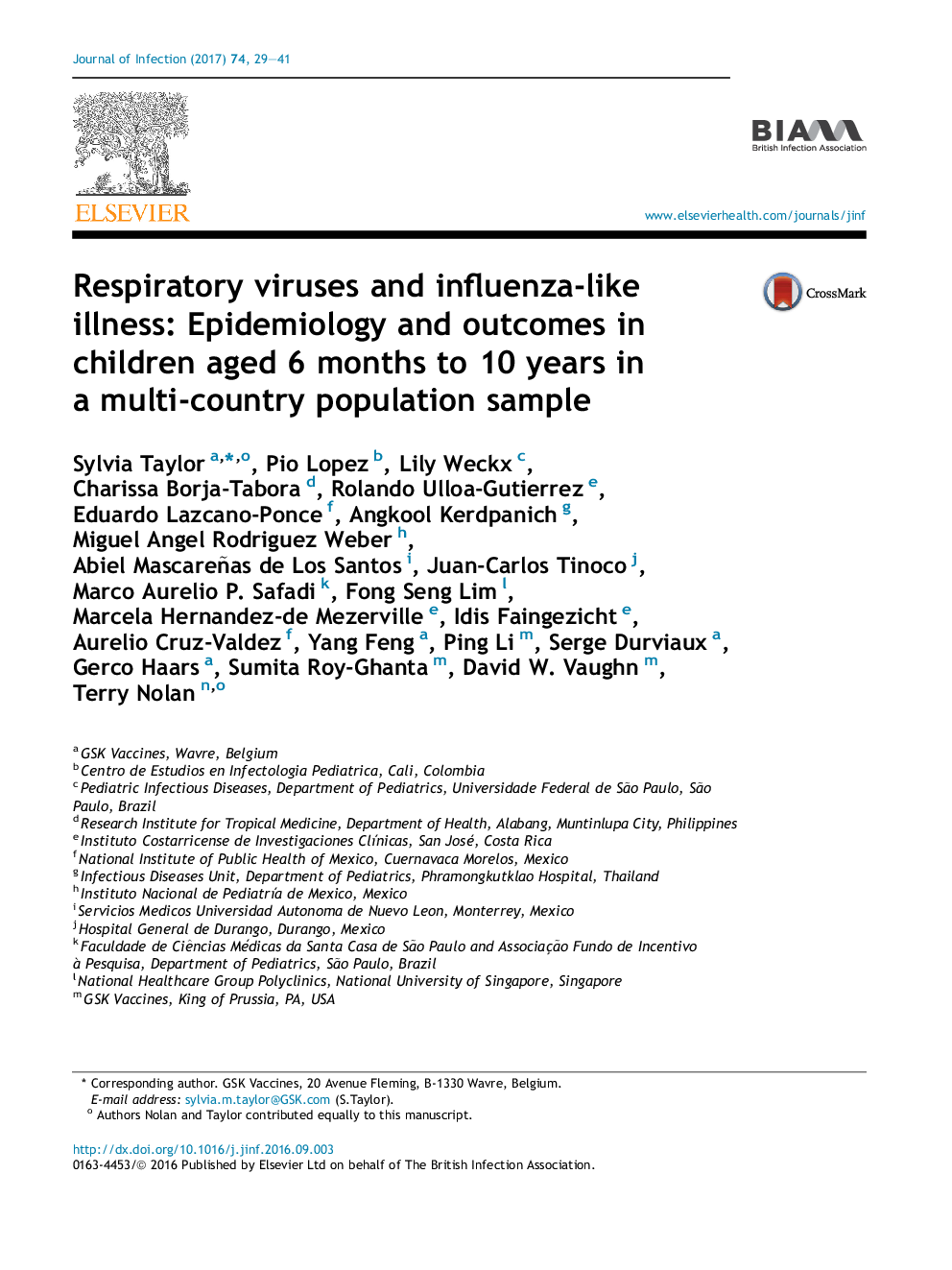| Article ID | Journal | Published Year | Pages | File Type |
|---|---|---|---|---|
| 5668664 | Journal of Infection | 2017 | 13 Pages |
SummaryBackgroundBetter population data on respiratory viruses in children in tropical and southern hemisphere countries is needed.MethodsThe epidemiology of respiratory viruses among healthy children (6 months to <10 years) with influenza-like illness (ILI) was determined in a population sample derived from an influenza vaccine trial (NCT01051661) in 17 centers in eight countries (Australia, South East Asia and Latin America). Active surveillance for ILI was conducted for approximately 1 year (between February 2010 and August 2011), with PCR analysis of nasal and throat swabs.Results6266 children were included, of whom 2421 experienced 3717 ILI episodes. Rhinovirus/enterovirus had the highest prevalence (41.5%), followed by influenza (15.8%), adenovirus (9.8%), parainfluenza and respiratory syncytial virus (RSV) (both 9.7%), coronavirus (5.6%), human metapneumovirus (5.5%) and human bocavirus (HBov) (2.0%). Corresponding incidence per 100 person-years was 29.78, 11.34, 7.03, 6.96, 6.94, 4.00, 3.98 and 1.41. Except for influenza, respiratory virus prevalence declined with age. The incidence of medically-attended ILI associated with viral infection ranged from 1.03 (HBov) to 23.69 (rhinovirus/enterovirus). The percentage of children missing school or daycare ranged from 21.4% (HBov) to 52.1% (influenza).ConclusionsActive surveillance of healthy children provided evidence of respiratory illness burden associated with several viruses, with a substantial burden in older children.
